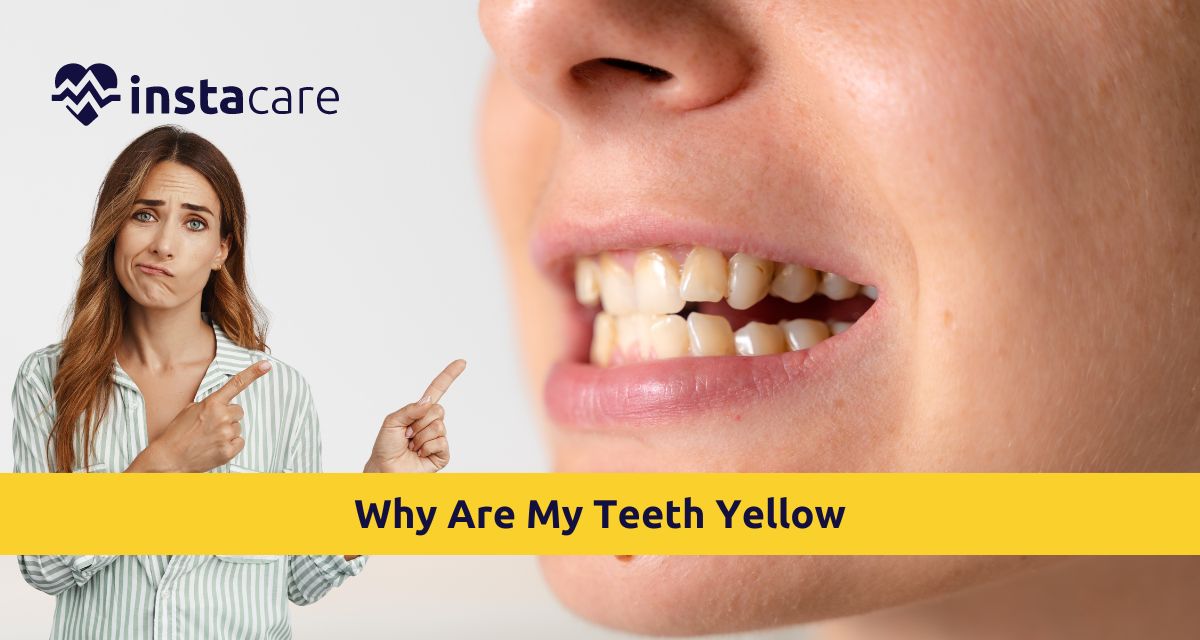Many people find yellow teeth to be a very perplexing issue,
even those who practice good cleaning and flossing habits. The yellowish tint,
however, continues even after you follow the regimen, leaving you to wonder
what it is that makes your teeth appear to be trying to turn yellow all the
time. To address this common worry and be able to smile with confidence, it's
critical to comprehend the reasons behind yellow teeth.
Numerous factors, ranging from dietary practices to genetic
predispositions, might affect tooth color. Understanding the cause of your
teeth's discoloration will enable you to take preventative action and achieve
a whiter, healthier smile.
Understanding Tooth Discoloration
Yes, having yellow teeth can be upsetting. Even while
brushing and flossing are fundamental dental care practices, yellowing may not
always be prevented or completely eliminated by them. Tooth discoloration can
be caused by a variety of causes, including lifestyle decisions, genetic
predispositions, and eating habits. Gaining an understanding of these root
causes is essential to solving the problem and bringing back your smile's
original brightness.
Some Important Causes of Yellow Teeth
Dietary Practices: A major contributing factor to tooth
discolouration is the meals and drinks we consume. Products such as berries,
red wine, tea, coffee, and tea include molecules that are colored and called
chromogens. Your teeth's enamel may get attached to these chromogens,
discoloring it over time.
Tobacco Use:
The impact of tobacco on oral health cannot be overstated.
Whether through smoking or chewing, tobacco introduces a cocktail of harmful
substances, including tar and nicotine, into the delicate environment of the
mouth. These substances are notorious for their ability to permeate the enamel,
infiltrating its porous structure and leaving behind stubborn stains. Over
time, the accumulation of tar and nicotine can manifest as unsightly yellow or
brown discoloration on the surface of the teeth.
Moreover, the detrimental effects of tobacco extend beyond
mere staining, contributing to a host of oral health issues, including gum
disease, tooth decay, and even oral cancer. For individuals who use tobacco
products, addressing tooth discoloration is just one aspect of a broader
imperative to safeguard their oral health and overall well-being.
Poor Oral Hygiene:
Maintaining proper oral hygiene is essential for preserving
the health and appearance of your teeth. However, when brushing and flossing
become neglected or inconsistent, the consequences can be dire. Inadequate oral
hygiene creates an inviting environment for plaque, a sticky film of bacteria,
to accumulate on the surface of the teeth. As plaque builds up, it gradually
hardens into tartar, a stubborn deposit that clings to the enamel and harbors
harmful bacteria.
Not only does this lead to the development of cavities and
gum disease, but it also exacerbates tooth discoloration. Stains from food and
beverages become trapped within the layers of plaque and tartar, gradually
diminishing the brightness of your smile. Thus, prioritizing regular brushing,
flossing, and professional cleanings is paramount in preventing the unsightly
effects of poor oral hygiene.
Aging:
The passage of time inevitably takes its toll on our teeth,
as the once-vibrant enamel gradually succumbs to the relentless forces of
aging. With each passing year, the protective layer of enamel thins and wears
down, exposing the underlying dentin to the outside world. Unlike enamel, which
boasts a pristine white hue, dentin possesses a natural yellowish tint. As the
enamel diminishes, the inherent color of the dentin becomes increasingly
visible, imparting a yellowed appearance to the teeth.
This phenomenon is a hallmark of the aging process,
affecting virtually everyone to some degree. While it may be impossible to halt
the march of time, understanding the effects of aging on tooth coloration
empowers individuals to make informed decisions about their oral care regimen
and pursue appropriate treatment options to maintain a vibrant smile throughout
their golden years.
Genetics:
Your teeth's color is also influenced by your genetic
makeup. Certain individuals are born with enamel that is thicker or more
translucent than others, which can have an impact on how light reflects off
their teeth. Moreover, some genetic disorders might result in aberrant tooth
growth, which can darken teeth or produce defects in the enamel.
How to Avoid and Handle Yellow Teeth?
Preserve Good Oral Hygiene:
Tooth yellowing can be avoided with good oral hygiene. Use
fluoride toothpaste to brush your teeth at least twice a day in order to get
rid of plaque and surface stains. Daily flossing also aids in cleaning the
areas between teeth and along the gum line that toothbrush bristles could miss.
Watch Your Diet:
You can avoid tooth discoloration by paying attention to
the foods you eat. Reduce the amount of foods and drinks that stain, such as
red wine, soda, tea, and coffee. In order to lessen the chance of discoloration
and assist wash away colored molecules, rinse your mouth with water after
consuming these things.
Give Up Smoking:
One of the best strategies to stop tooth yellowing is to
stop smoking or using tobacco products. Chemicals in tobacco can discolor
enamel and aid in the accumulation of tartar and plaque. You can enhance your
smile's general health and attractiveness by giving up tobacco consumption.
Frequent Dental checkups:
Preventing tooth discoloration and preserving oral health
depend heavily on routine dental checkups. Professional cleanings by your
dentist can get rid of tartar accumulation and difficult-to-remove stains that
may be too difficult to reach with at-home oral hygiene techniques.
Furthermore, routine examinations enable your dentist to keep an eye on your
oral health and identify any possible problems—like gum disease or tooth decay—early.
Professional Teeth Whitening:
Your dentist can provide professional teeth whitening
procedures if you want a whiter, more attractive smile. Strong bleaching agents
are used in these treatments to remove stains and lighten the color of your
teeth. In just one or two treatments, professional whitening will show
noticeable results; it is safe and effective.
Conclusion
Even though yellow teeth are a common concern, causes and
prevention can go a long way in keeping a radiant, healthy smile. By embracing
good oral hygiene practices, being responsible with your diet, and taking
professional dental care when required, you will be able to combat
discoloration and have the confident smile that you want. Remember, the best
things in life are free, and the adage goes true for a healthy smile, too;
hence, engage in preventive measures to save your oral health and keep the
natural beauty of your teeth.
Please book an appointment with the best Dentist in Sialkot, Karachi, Islamabad, and all major cities of Pakistan through InstaCare, or call our helpline at 03171777509 to find the verified doctor for your disease.

